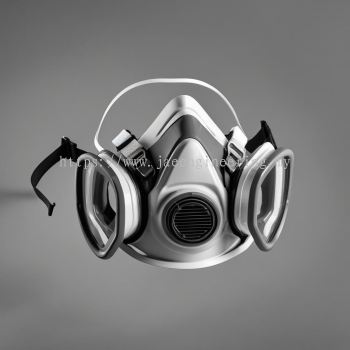A reusable respirator, also known as a half-mask respirator or full-face respirator, is a type of personal protective equipment (PPE) designed to provide effective respiratory protection against airborne contaminants, such as dust, fumes, gases, and vapors. Unlike disposable respirators, reusable respirators can be cleaned, maintained, and used multiple times, making them both cost-effective and environmentally friendly. Here are key features and descriptions of reusable respirators:
-
Construction Materials: Reusable respirators are typically made from durable materials such as rubber, silicone, or thermoplastic elastomers. These materials provide a secure and comfortable fit while enhancing the longevity of the respirator.
-
Design Options:
- Half-Mask Respirators: Cover the nose and mouth, providing protection primarily for the respiratory tract. They typically use filter cartridges or particulate filters.
- Full-Face Respirators: Cover the entire face, including the eyes, providing additional protection against harmful vapors or airborne particles. They often include a face shield that protects against splashes and other hazards.
-
Filtering Mechanism: Reusable respirators use a combination of filters and cartridges to remove airborne contaminants. Filters may be designed for specific applications, such as:
- Particulate Filters: Remove dust and particulates from the air; often rated (e.g., N95, P100).
- Gas and Vapor Cartridges: Designed to filter out specific gases and vapors, providing protection against chemical exposures.
-
Interchangeable Components: Many reusable respirators allow for the easy replacement of filters and cartridges, enabling users to customize their respiratory protection based on the specific hazards present in their environment.
-
Fit and Seal: A tight seal is essential for effective protection. Users must select the correct size and follow proper fitting procedures, which may include fit testing, to ensure that the respirator forms a proper seal against the face.
-
Comfort Features: To enhance comfort during prolonged use, reusable respirators often have padded straps and adjustable features. Some models include a speaking diaphragm, which allows for clearer communication while wearing the respirator.
-
Maintenance and Cleaning: Reusable respirators require regular cleaning and maintenance to ensure their effectiveness and hygiene. Users should follow manufacturer guidelines for cleaning the respirator and replacing filters when needed.
-
Applications: Reusable respirators are used in various industries and settings, including:
- Construction: For protection against dust, asbestos, and other hazardous materials.
- Healthcare: To protect healthcare workers from infectious agents and harmful substances.
- Manufacturing: In processes with exposure to fumes, chemicals, and particulate matter.
- Laboratories: For handling hazardous substances and maintaining safe working environments.
-
Proper Training: Users should receive training on how to properly wear, maintain, and store reusable respirators to maximize their protective capabilities and ensure their safety in hazardous environments.
Overall, reusable respirators are essential tools for respiratory protection in many occupational and industrial settings. Their ability to provide effective filtration against a wide range of airborne hazards, combined with comfort and durability, make them a preferred choice for workers exposed to harmful environments.
We carry various types of reusable respirators to suit our clients' requirements and applications. The reusable respirators that we promote are DOSH and SIRIM approved. Please contact us for more details and solutions.






 US 17048
US 17048  GB 13141
GB 13141  CA 10291
CA 10291  AU 10258
AU 10258  BR 8417
BR 8417  IE 5380
IE 5380  NZ 3300
NZ 3300  IN 2274
IN 2274 



